RESIDENTIAL
PREVIOUS PROJECT
NEXT PROJECT
PREVIOUS PROJECT
NEXT PROJECT

Japandi Apartment
This Japandi-inspired apartment is a refined and tranquil living space that masterfully blends the minimalist principles of Japanese design with the soft, functional comfort of Scandinavian style. Rooted in the shared values of simplicity, intentionality, and a deep respect for craftsmanship, the apartment offers a calming retreat that feels both contemporary and timeless.
The interior palette is grounded in soft, muted earthy tones—shades of warm white, sandy beige, stone grey, and natural wood—that evoke a sense of quiet harmony. These colors work in concert with clean architectural lines and an open, flowing layout to create an atmosphere that feels light, balanced, and deeply inviting. Every element in the apartment is carefully curated, reflecting the Japandi philosophy of “living well with less”—prioritizing quality, functionality, and emotional resonance over excess.
At the heart of the living area is a low-profile modular sofa, upholstered in a textured linen or cotton blend that invites touch and relaxation. Its understated silhouette emphasizes comfort without compromising on elegance, serving as the centerpiece for everyday living and quiet reflection. A handcrafted wooden coffee table—simple in form but rich in texture—anchors the space, while side tables in blackened steel or stone add a subtle sense of contrast and material depth.
Natural materials are used generously throughout the apartment, reinforcing a connection to the organic world. Wide-plank oak flooring runs continuously from room to room, while accents of bamboo, rattan, and raw ceramic add warmth and tactile variation. Built-in cabinetry, finished in either matte wood or soft-touch lacquer, provides discreet storage that keeps the environment visually uncluttered. Shelving units feature integrated ambient lighting, softly illuminating curated objects such as hand-thrown vases, minimalist sculptures, or a few well-chosen books—each one meaningful, none excessive.
Lighting is treated as a design element in itself. During the day, expansive floor-to-ceiling windows flood the space with natural light, shifting gently across the surfaces and enhancing the raw beauty of each material. These windows not only brighten the interiors but also offer unobstructed views of the surrounding cityscape, subtly blurring the boundaries between interior and exterior living. In the evening, the lighting transitions to layered, soft illumination: paper lanterns, linen-covered floor lamps, and concealed LEDs cast a warm, inviting glow that promotes relaxation and intimacy.
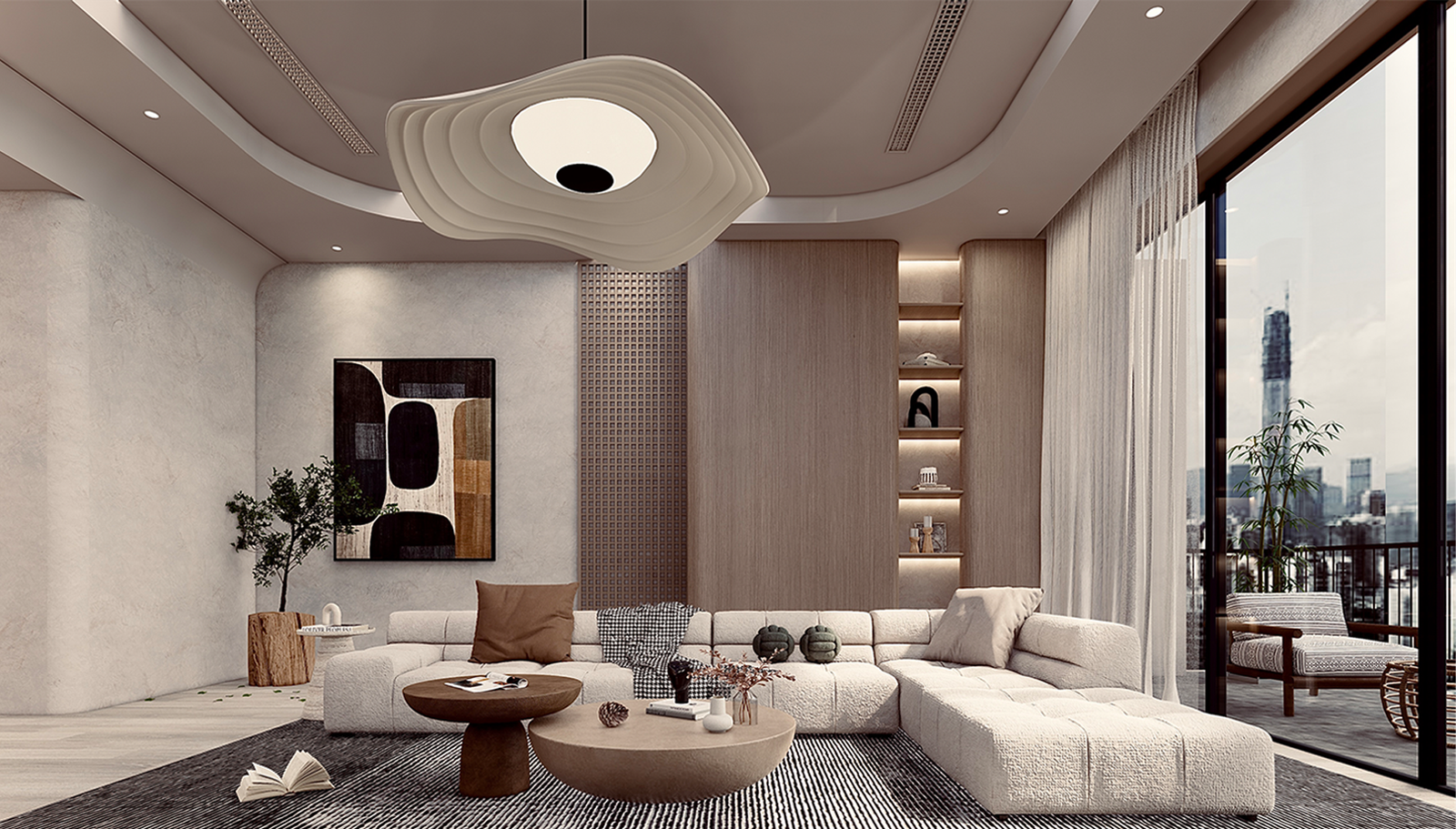
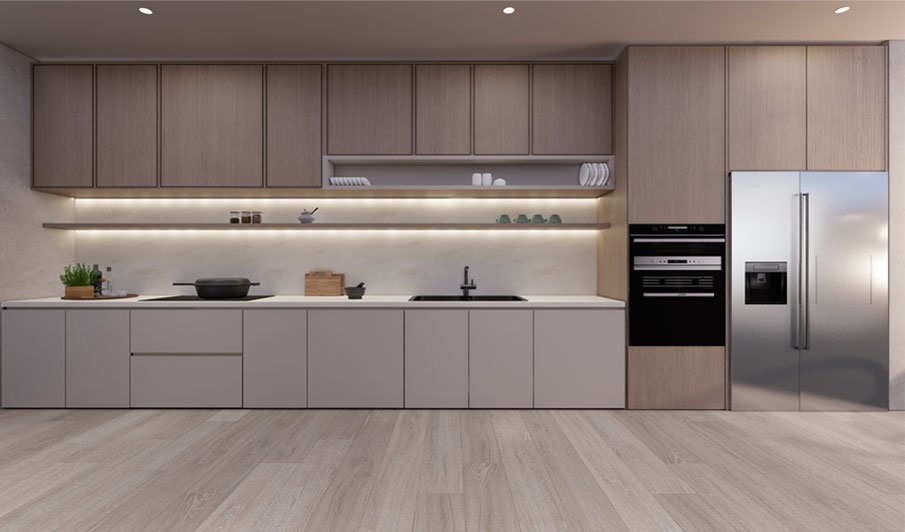
The kitchen, open to the living area but cleanly delineated through material shifts, continues the Japandi ethos. Cabinets in light wood or matte graphite finishes are paired with stone or quartz countertops in muted tones. Open shelving displays a minimal collection of handmade ceramics and natural wooden bowls, while integrated appliances maintain the room’s sleek, seamless aesthetic. A slender dining table—crafted from solid wood and paired with simple spindle-back chairs—invites quiet meals and meaningful gatherings, free from distraction.
In the bedroom, the design becomes even more serene. A low platform bed with an upholstered or wooden headboard provides a grounded focal point. Bedding is kept intentionally simple—layered in soft, breathable natural fibers like cotton, linen, and wool in off-whites and warm greys. Floating nightstands and built-in wardrobes preserve floor space and visual calm. A single piece of art, perhaps a minimalist line drawing or a subdued landscape, brings in quiet character without dominating the room. Window treatments, if present, are kept sheer and natural, allowing morning light to gently filter through.
The bathroom, though compact, is a sanctuary of its own. Natural stone tiles, brushed metal fixtures, and a floating vanity made of warm wood or composite stone create a spa-like atmosphere. Thoughtful lighting, a frameless mirror, and recessed storage ensure the space remains functional and uncluttered. A deep soaking tub or walk-in shower with a rainfall head adds an indulgent yet understated sense of luxury.
Indoor greenery is used sparingly but deliberately. A single bonsai tree, a potted olive or rubber plant, or a sculptural branch in a ceramic vessel adds life and organic form to the interiors. These natural elements not only soften the space but also reinforce the Japandi reverence for nature and imperfection—embodying wabi-sabi, the Japanese philosophy of finding beauty in transience and imperfection.
Ultimately, this Japandi-inspired apartment is more than just a stylistic expression—it’s a way of living. It invites stillness, clarity, and intentionality into daily life, encouraging a slower, more mindful approach to the home. Every detail, from the textures underfoot to the way light moves through the space, has been considered with care. The result is a sanctuary that feels deeply human, elegantly simple, and beautifully in tune with both nature and modern urban living.
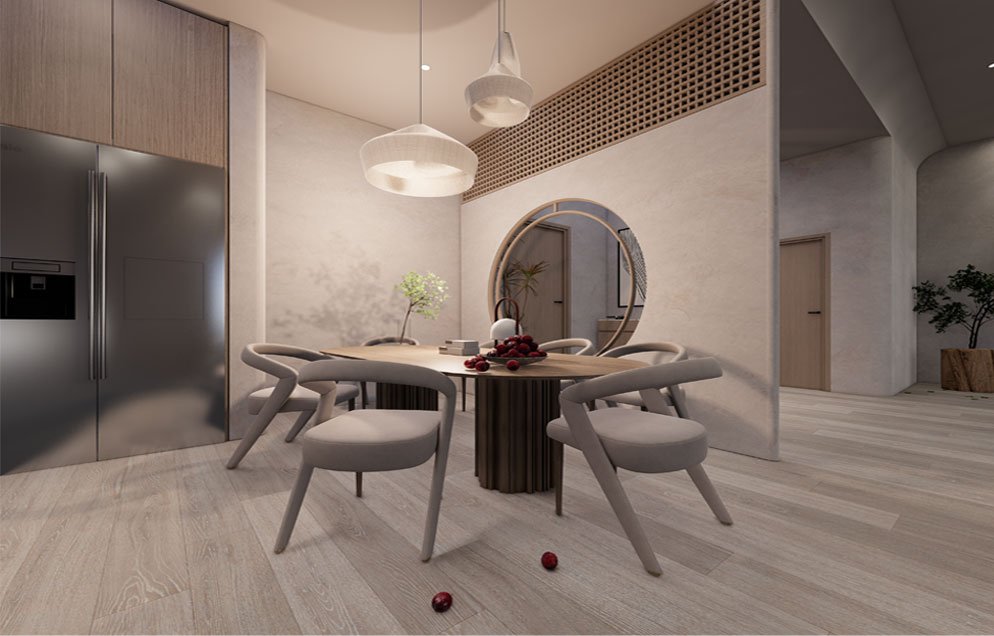
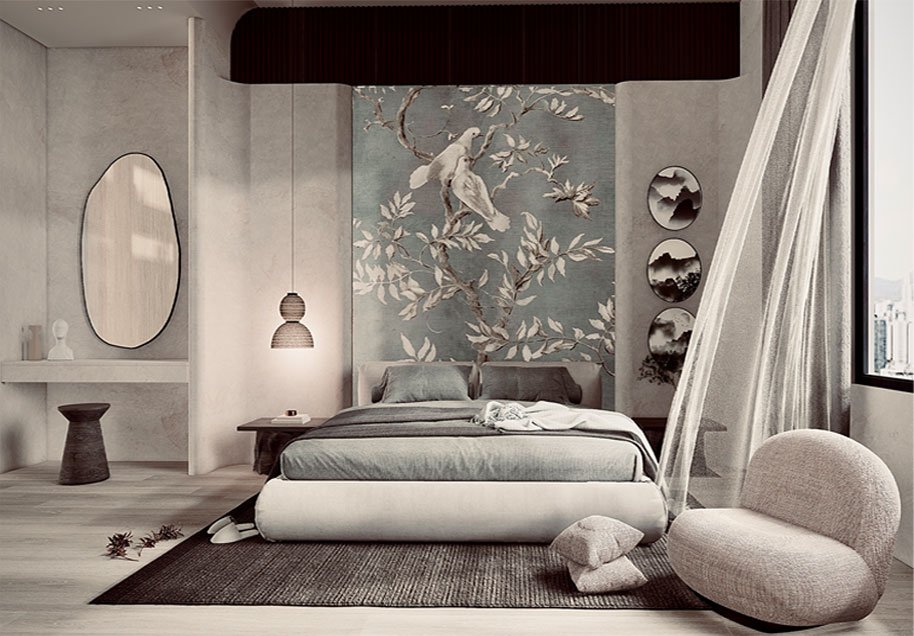
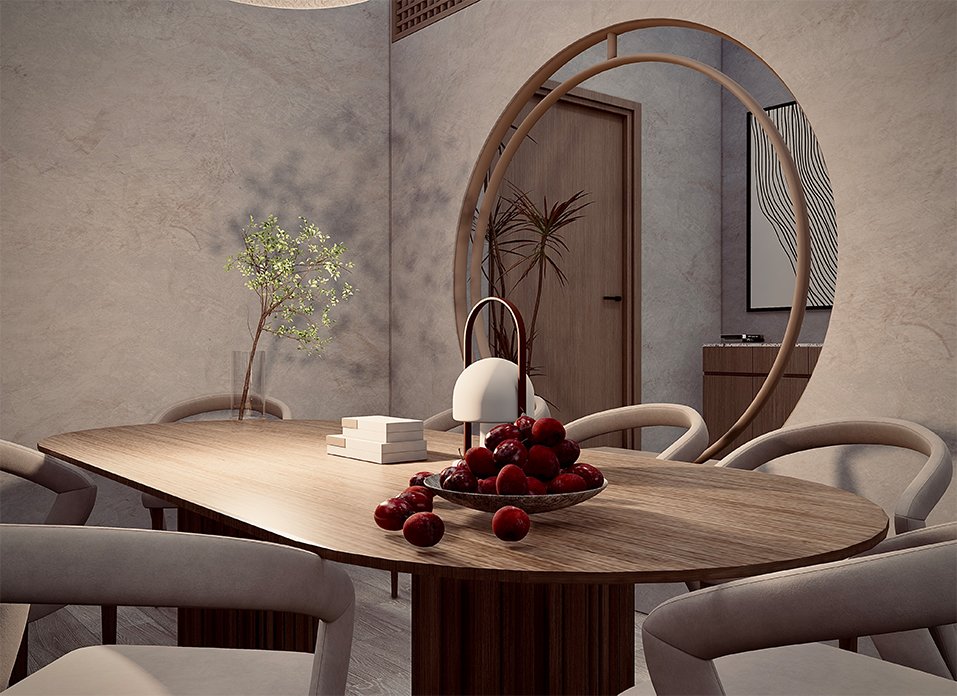
Armandointerior © 2025. Design & Developed by ICT Information Systems LLC